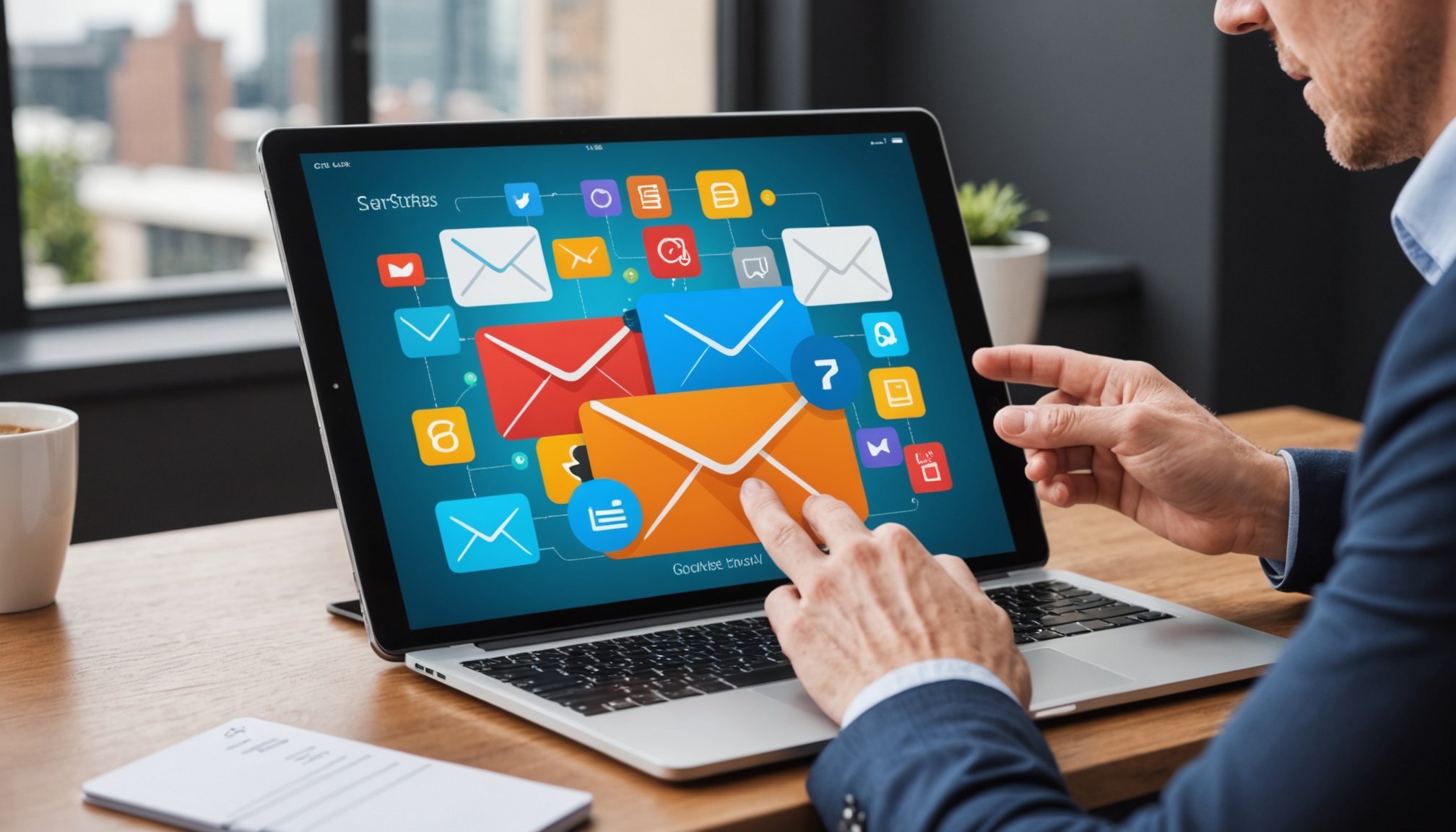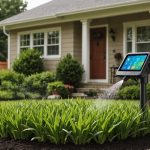Overview of Email Management on Tablets
Email management on tablets can significantly enhance tablet productivity, yet it poses unique challenges. When you juggle multiple accounts on a small screen, keeping your inbox organization in check becomes daunting. This is why thoughtful strategies are crucial.
Key challenges include limited screen space which can make navigating between accounts cumbersome, and the lack of advanced features that desktops offer. For instance, drag-and-drop functionality, or advanced filtering systems to segregate emails, might not be readily available. Such limitations often lead to cluttered inboxes, affecting productivity.
Topic to read : Mastering smart irrigation: effortlessly control your home watering system with your smartphone
To counter these challenges, start by prioritising emails. Utilise the flagging or pinning features available in most email apps. Setting specific times to read and respond to emails can prevent disruptions during work hours, boosting efficiency.
Additionally, dividing emails into folders or categories can enhance inbox organization. Every time a new email arrives, quickly sort it into its designated folder. Use rules or filters to automatically direct specific emails into folders based on sender or subject.
In parallel : Ultimate guide to controlling your air conditioner via smartphone for unmatched smart home comfort
Leveraging third-party applications can also assist. Many apps offer robust features that transform simple tablets into powerful email management tools. Selecting an app with a user-friendly interface, that supports multiple accounts seamlessly, can make all the difference for your tablet productivity.
Choosing the Right Email Apps
Selecting the most suitable email apps can greatly enhance productivity and streamline communication tasks. In this section, we explore key considerations and app features necessary for optimizing your email experience.
Top Recommended Email Apps
When prioritizing productivity tools within email software, apps like Outlook, Gmail, and Spark stand out. They offer intuitive app features such as customizable notifications, quick sorting, and advanced search functions. Microsoft Outlook, for instance, integrates seamlessly with Microsoft Office Suite, making it ideal for business environments.
Features to Look for in an Email App
Identifying the right email apps means prioritizing features that enhance functionality. Essential features to consider include:
- Unified inbox: A single view for all emails across multiple accounts.
- Advanced filtering: Organise and classify important messages efficiently.
- Productivity tools: Integration with calendars, task lists, and note-taking applications.
- Offline access: Capability to view emails without internet connection.
Integrating Multiple Accounts Seamlessly
A common necessity for users is a platform that effortlessly manages several accounts. Leading email apps like Outlook and Gmail allow users to sync and navigate multiple accounts without hassle. By providing a centralised interface, these apps simplify the way users interact with various email services, ensuring increased productivity.
Setting Up Your Email Accounts
For those eager to optimize their tablet experience, account setup becomes pivotal. Configuring email accounts on tablets can streamline communication, ensuring all correspondence is at your fingertips. Begin by accessing the settings menu on your device. Navigate to email configurations and select the option to add multiple accounts. Enter the necessary details for each account, such as your email address and password, which then allows the tablet to establish a connection.
Customizing Your Email Experience
Once your accounts are set up, personalizing your notifications and organizing your emails enhances usability. You can customize settings by navigating back to the email configurations menu. Adjust notification preferences to receive alerts immediately, or choose to receive updates less frequently. Additionally, organize your inbox with folders and labels for better management of your emails.
Syncing Across Devices
To ensure seamless access to your emails across different platforms, syncing is essential. Most tablets support syncing with cloud services, ensuring that any changes made on one device are reflected on others. This provides consistent access to emails whether you’re using your tablet, phone, or computer, keeping your communication synchronized wherever you are.
Organizing Your Inbox Effectively
Achieving an efficient inbox organization is often hindered by an overwhelming flood of emails. Luckily, a few strategies can help manage this challenge effectively.
Utilizing Folders and Labels
Folders and labels are key components in inbox organization. By categorizing emails into specific folders, users can easily access necessary communications while reducing clutter. Labels allow for further categorization and retrieval of emails based on specific keywords or categories, making folder management simpler. For instance, creating labels like “Urgent”, “To-Read”, and “Finance” can streamline email sorting.
Automating Email Sorting with Filters
Implementing filters transforms time-consuming manual processes into seamless automation. Filters use specific criteria to sort emails as they arrive, ensuring important messages aren’t lost in the sea of incoming emails. This email sorting automation helps in maintaining a tidy inbox, freeing up time for other tasks. For example, filters can redirect newsletters to specific folders automatically.
Prioritizing Emails with Flags and Stars
Flags and stars act as visual cues, allowing users to highlight significant emails. This simple yet effective tool aids in tracking priority communications. Flagging or starring emails helps in distinguishing critical notes from casual correspondence, thus enhancing inbox organization by identifying messages requiring immediate attention. This method, coupled with folders and filters, elevates overall folder management efficiency, keeping inboxes organized.
Implementing Email Management Techniques
Managing your emails effectively can have a profound impact on your productivity. One approach is adopting Inbox Zero, a productivity method focused on keeping your inbox empty—or as close to empty as possible—at all times. Begin by sorting emails into categories such as ‘Action’, ‘Waiting’, or ‘Read Later’. By clarifying which emails require urgent attention and which do not, you can reduce clutter and keep your inbox clear.
To manage your time efficiently, employing time-blocking strategies for checking emails is essential. Instead of constantly reacting to new messages, designate specific times during the day to address your inbox. For example, you might reserve 30 minutes in the morning and another 30 minutes in the afternoon solely for emails. This avoids interruptions during other tasks, promoting sustained focus.
Moreover, the snooze feature provided by many email platforms can enhance your focus. By temporarily hiding non-urgent emails, you create mental space to concentrate on more pressing matters. This feature allows you to set an email to reappear in your inbox at a later, more convenient time, aligning with your time management goals. Implementing these techniques leads to a more organized, efficient workflow.
Dealing with Spam and Unwanted Emails
Navigating through a cluttered inbox is a struggle many face daily. With the right spam management techniques, maintaining a clean and organised email account becomes achievable.
Identifying and Reporting Spam
Spotting spam emails can be a daunting task. Email filters are your first line of defence. Once you’ve identified an unwanted message, report it as spam. This trains your email system to recognise similar messages in the future, helping to reduce clutter over time. Spam often masquerades as legitimate communication. Look closely at the sender’s address and content for anything suspicious.
Using Filters to Minimize Inbox Clutter
Email filters are indispensable tools in managing spam. Set up rules to automatically sort incoming mail to specific folders. This reduces the need to manually sift through messages. Most email services offer robust filter options enabling you to move, categorise, or delete messages with keywords or repeated senders. Employing these filters effectively is pivotal for spam management.
Effective Unsubscribe Methods
One of the most effective strategies for dealing with persistent unwanted emails is to use unsubscribe strategies. Check the footer of the email for the ‘unsubscribe’ link. If you can’t find it or it looks suspicious, consider visiting the company’s website directly to unsubscribe.
Maximizing Productivity with Integrated Tools
Integrating email with task management apps significantly boosts productivity. It enables seamless conversion of emails into tasks, ensuring nothing slips through the cracks. By linking emails to your task management application, you can swiftly assign, update, or complete tasks directly from your inbox. This integration removes redundant steps, saving valuable time while enhancing focus on critical tasks.
Collaboration tools are crucial for effective team communication via email. They allow teams to share files, discuss projects, and make collective decisions with ease. Incorporating powerful collaboration tools ensures that emails transform into interactive platforms for brainstorming and feedback, thus fostering a conducive environment for productivity. When emails also support document sharing and comment features, it smooths communication gap, encouraging team unity and shared goal focus.
Calendar integration is another pivotal element for scheduling. When your calendar syncs with emails, scheduling becomes effortless. It enables you to quickly set up meetings, track availability, and send invites without leaving your mailbox. This synchronization not only helps in managing time effectively but also ensures all to-do items and appointments are accounted for. Adopting a calendar-system linked with your email enhances your ability to manage tasks and meetings in a streamlined manner, ultimately promoting better productivity.
Common Pitfalls and Solutions
Understanding common email mistakes is crucial for efficient email management. Many users unknowingly make errors that hinder productivity. Here, we explore these pitfalls and their solutions.
Common Mistakes in Email Management
Email management often suffers from poor organisation and clutter. Users tend to overlook setting up filters and labels. This leads to a disorganised inbox, making it challenging to find important messages. Another widespread error is neglecting the use of folders for archiving past communications, resulting in a chaotic workspace.
Troubleshooting Sync Issues
Sync issues commonly arise when devices fail to update emails simultaneously. Users typically face discrepancies between their devices. This happens due to either connectivity problems or configuration errors in email clients. To troubleshoot, ensure your software is updated, and check network connections. Double-check your synchronisation settings to guarantee they align across all devices.
Solutions for Overwhelming Email Volumes
An overwhelming volume of emails can cause stress and hinder workflow. Implementing batch processing can alleviate this. Dedicate specific times in your day to handle emails, rather than constantly checking your inbox. Utilising priority marking can also help in focusing on important emails first. By adopting these strategies, managing high volumes becomes less daunting.
Understanding and addressing these user errors can significantly enhance your email handling efficiency, leading to a more structured and productive digital workspace.
Case Studies and Real-Life Examples
Exploring email management examples in practice can provide a wealth of insights. A notable success story is that of a multinational corporation that implemented a “zero inbox” strategy across its offices. By encouraging employees to prioritise and categorise incoming messages, they saw a 30% increase in team productivity and a significant reduction in email overload. This example highlights how effective sorting and prioritisation can transform workplace efficiency.
In another productivity case study, a small business owner adopted a structured email scheduling system, allocating specific times for checking and responding to emails. This approach allowed for more uninterrupted, focused work periods and ultimately led to an increase in creative output by 15%. Such strategies underscore the impact of disciplined email habits on daily performance.
Lessons from individuals who have streamlined their email processes reveal the power of simplicity. One professional reduced distractions by setting up keyword filters that automatically sorted emails into designated folders. This straightforward yet powerful technique exemplifies how customisation can tackle the deluge of digital communications effectively.
These real-life examples serve as practical demonstrations of how email management can enhance productivity and save time, encouraging others to embrace tailored strategies for their unique needs.











